1. World Health Organization. Global Health Estimates 2015: Deaths by Cause, Age, Sex, by Country and by Region, 2000-2015. Geneva: World Health Organization;2016.
2. Saeedi P, Petersohn I, Salpea P, Malanda B, Karuranga S, Unwin N, Colagiuri S, Guariguata L, Motala AA, Ogurtsova K, et al. Global and regional diabetes prevalence estimates for 2019 and projections for 2030 and 2045: Results from the International Diabetes Federation Diabetes Atlas, 9th edition. Diabetes Res Clin Pract. 2019; 157:107843. PMID:
31518657.
4. Choi YJ, Kim HC, Kim HM, Park SW, Kim J, Kim DJ. Prevalence and management of diabetes in Korean adults: Korea National Health and Nutrition Examination Surveys 1998–2005. Diabetes Care. 2009; 32:2016–2020. PMID:
19675201.
5. Jung CH, Son JW, Kang S, Kim WJ, Kim HS, Kim HS, Seo M, Shin HJ, Lee SS, Jeong SJ, et al. Diabetes fact sheets in Korea, 2020: an appraisal of current status. Diabetes Metab J. 2021; 45:1–10. PMID:
33434426.
6. American Diabetes Association. 2. Classification and diagnosis of diabetes: standards of medical care in diabetes-2021. Diabetes Care. 2021; 44:S15–S33. PMID:
33298413.
7. Hur KY, Moon MK, Park JS, Kim SK, Lee SH, Yun JS, Baek JH, Noh J, Lee BW, Oh TJ, et al. 2021 Clinical Practice Guidelines for diabetes mellitus of the Korean Diabetes Association. Diabetes Metab J. 2021; 45:461–481. PMID:
34352984.
8. Kang MR. Use of oral nutritional supplements for patients with diabetes. J Korean Diabetes. 2017; 18:181–188.
9. de Luis DA, Izaola O, Aller R, Cuellar L, Terroba MC, Martin T, Cabezas G, Rojo S, Domingo M. A randomized clinical trial with two enteral diabetes-specific supplements in patients with diabetes mellitus type 2: metabolic effects. Eur Rev Med Pharmacol Sci. 2008; 12:261–266. PMID:
18727459.
10. de Luis DA, Izaola O, de la Fuente B, Terroba MC, Cuellar L, Cabezas G. A randomized clinical trial with two doses of an enteral diabetes-specific supplements in elderly patients with diabetes mellitus type 2. Eur Rev Med Pharmacol Sci. 2013; 17:1626–1630. PMID:
23832729.
11. Mayr P, Kuhn KS, Klein P, Stover JF, Pestana EA. A diabetes-specific oral nutritional supplement improves glycaemic control in type 2 diabetes patients. Exp Clin Endocrinol Diabetes. 2016; 124:401–409. PMID:
27050069.
12. Jiang S, Xiao W, Zhu X, Yang P, Zheng Z, Lu S, Jiang S, Zhang G, Liu J. Review on
D-allulose:
in vivo metabolism, catalytic mechanism, engineering strain construction, bio-production technology. Front Bioeng Biotechnol. 2020; 8:26. PMID:
32117915.
14. Hossain A, Yamaguchi F, Matsuo T, Tsukamoto I, Toyoda Y, Ogawa M, Nagata Y, Tokuda M. Rare sugar
D-allulose: potential role and therapeutic monitoring in maintaining obesity and type 2 diabetes mellitus. Pharmacol Ther. 2015; 155:49–59. PMID:
26297965.
15. Chung YM, Hyun Lee J, Youl Kim D, Hwang SH, Hong YH, Kim SB, Jin Lee S, Hye Park C. Dietary
D-psicose reduced visceral fat mass in high-fat diet-induced obese rats. J Food Sci. 2012; 77:H53–H58. PMID:
22339545.
16. Han Y, Kwon EY, Yu MK, Lee SJ, Kim HJ, Kim SB, Kim YH, Choi MS. A preliminary study for evaluating the dose-dependent effect of
D-allulose for fat mass reduction in adult humans: a randomized, double-blind, placebo-controlled trial. Nutrients. 2018; 10:160. PMID:
29385054.
17. Alish CJ, Garvey WT, Maki KC, Sacks GS, Hustead DS, Hegazi RA, Mustad VA. A diabetes-specific enteral formula improves glycemic variability in patients with type 2 diabetes. Diabetes Technol Ther. 2010; 12:419–425. PMID:
20470226.
18. Elia M, Ceriello A, Laube H, Sinclair AJ, Engfer M, Stratton RJ. Enteral nutritional support and use of diabetes-specific formulas for patients with diabetes: a systematic review and meta-analysis. Diabetes Care. 2005; 28:2267–2279. PMID:
16123506.
19. Matthews DR, Hosker JP, Rudenski AS, Naylor BA, Treacher DF, Turner RC. Homeostasis model assessment: insulin resistance and β-cell function from fasting plasma glucose and insulin concentrations in man. Diabetologia. 1985; 28:412–419. PMID:
3899825.
20. Oh JY, Yang YJ, Kim BS, Kang JH. Validity and reliability of Korean version of International Physical Activity Questionnaire (IPAQ) short form. Korean J Fam Med. 2007; 28:532–541.
21. Davis SR, Castelo-Branco C, Chedraui P, Lumsden MA, Nappi RE, Shah D, Villaseca P. Writing Group of the International Menopause Society for World Menopause Day 2012. Understanding weight gain at menopause. Climacteric. 2012; 15:419–429. PMID:
22978257.
22. Weickert MO, Pfeiffer AF. Metabolic effects of dietary fiber consumption and prevention of diabetes. J Nutr. 2008; 138:439–442. PMID:
18287346.
23. Pohl M, Mayr P, Mertl-Roetzer M, Lauster F, Haslbeck M, Hipper B, Steube D, Tietjen M, Eriksen J, Rahlfs VW. Glycemic control in patients with type 2 diabetes mellitus with a disease-specific enteral formula: stage II of a randomized, controlled multicenter trial. JPEN J Parenter Enteral Nutr. 2009; 33:37–49. PMID:
19011146.
24. Pohl M, Mayr P, Mertl-Roetzer M, Lauster F, Lerch M, Eriksen J, Haslbeck M, Rahlfs VW. Glycaemic control in type II diabetic tube-fed patients with a new enteral formula low in carbohydrates and high in monounsaturated fatty acids: a randomised controlled trial. Eur J Clin Nutr. 2005; 59:1221–1232. PMID:
16077745.
25. Ojo O, Weldon SM, Thompson T, Crockett R, Wang XH. The effect of diabetes-specific enteral nutrition formula on cardiometabolic parameters in patients with type 2 diabetes: a systematic review and meta–analysis of randomised controlled trials. Nutrients. 2019; 11:1905. PMID:
31443185.
26. Ojo O, Brooke J. Evaluation of the role of enteral nutrition in managing patients with diabetes: a systematic review. Nutrients. 2014; 6:5142–5152. PMID:
25412151.
27. Evert AB, Dennison M, Gardner CD, Garvey WT, Lau KH, MacLeod J, Mitri J, Pereira RF, Rawlings K, Robinson S, et al. Nutrition therapy for adults with diabetes or prediabetes: a consensus report. Diabetes Care. 2019; 42:731–754. PMID:
31000505.
28. Qian F, Korat AA, Malik V, Hu FB. Metabolic effects of monounsaturated fatty acid–enriched diets compared with carbohydrate or polyunsaturated fatty acid–enriched diets in patients with type 2 diabetes: a systematic review and meta-analysis of randomized controlled trials. Diabetes Care. 2016; 39:1448–1457. PMID:
27457635.
29. Huo R, Du T, Xu Y, Xu W, Chen X, Sun K, Yu X. Effects of Mediterranean-style diet on glycemic control, weight loss and cardiovascular risk factors among type 2 diabetes individuals: a meta-analysis. Eur J Clin Nutr. 2015; 69:1200–1208. PMID:
25369829.
30. Ye Z, Arumugam V, Haugabrooks E, Williamson P, Hendrich S. Soluble dietary fiber (Fibersol-2) decreased hunger and increased satiety hormones in humans when ingested with a meal. Nutr Res. 2015; 35:393–400. PMID:
25823991.
31. Han JH, Lee KH, Sohn HS, Lee YB, Park JS, Oh MJ. Evaluation of enteral foods prepared with soybean dietary fiber for patients with diarrhea. Korean J Agric Sci. 2008; 35:41–51.
32. Howarth NC, Saltzman E, Roberts SB. Dietary fiber and weight regulation. Nutr Rev. 2001; 59:129–139. PMID:
11396693.
33. Magnoni D, Rouws CH, Lansink M, van Laere KM, Campos AC. Long-term use of a diabetes-specific oral nutritional supplement results in a low-postprandial glucose response in diabetes patients. Diabetes Res Clin Pract. 2008; 80:75–82. PMID:
18067986.
34. Vaisman N, Lansink M, Rouws CH, van Laere KM, Segal R, Niv E, Bowling TE, Waitzberg DL, Morley JE. Tube feeding with a diabetes-specific feed for 12 weeks improves glycaemic control in type 2 diabetes patients. Clin Nutr. 2009; 28:549–555. PMID:
19501937.
35. Mustad VA, Hegazi RA, Hustead DS, Budiman ES, Rueda R, Maki K, Powers M, Mechanick JI, Bergenstal RM, Hamdy O. Use of a diabetes-specific nutritional shake to replace a daily breakfast and afternoon snack improves glycemic responses assessed by continuous glucose monitoring in people with type 2 diabetes: a randomized clinical pilot study. BMJ Open Diabetes Res Care. 2020; 8:e001258.
36. Pedersen E, Lange K, Clifton P. Effect of carbohydrate restriction in the first meal after an overnight fast on glycemic control in people with type 2 diabetes: a randomized trial. Am J Clin Nutr. 2016; 104:1285–1291. PMID:
27733405.
37. Monnier L, Colette C, Dejager S, Owens D. Magnitude of the dawn phenomenon and its impact on the overall glucose exposure in type 2 diabetes: is this of concern? Diabetes Care. 2013; 36:4057–4062. PMID:
24170753.
38. Franc S, Dardari D, Peschard C, Riveline JP, Biedzinski M, Boucherie B, Petit C, Requeda E, Mistretta F, Varroud-Vial M, et al. Can postprandial blood glucose excursion be predicted in type 2 diabetes? Diabetes Care. 2010; 33:1913–1918. PMID:
20551017.
39. Kim EK, Kim OY, Park J, Kim E, Kim J. Establishment and future tasks of estimated energy requirement in 2020 dietary reference intakes for Koreans. J Nutr Health. 2021; 54:573–583.
40. Bonelli A, Menna P, Minotti G, Angeletti S, Comandini A, Picollo R, Quarchioni E, Russo V, Salvatori E, Ferravante F, et al. Safety and tolerability of a novel oral nutritional supplement in healthy volunteers. Clin Nutr. 2021; 40:946–955. PMID:
32675020.
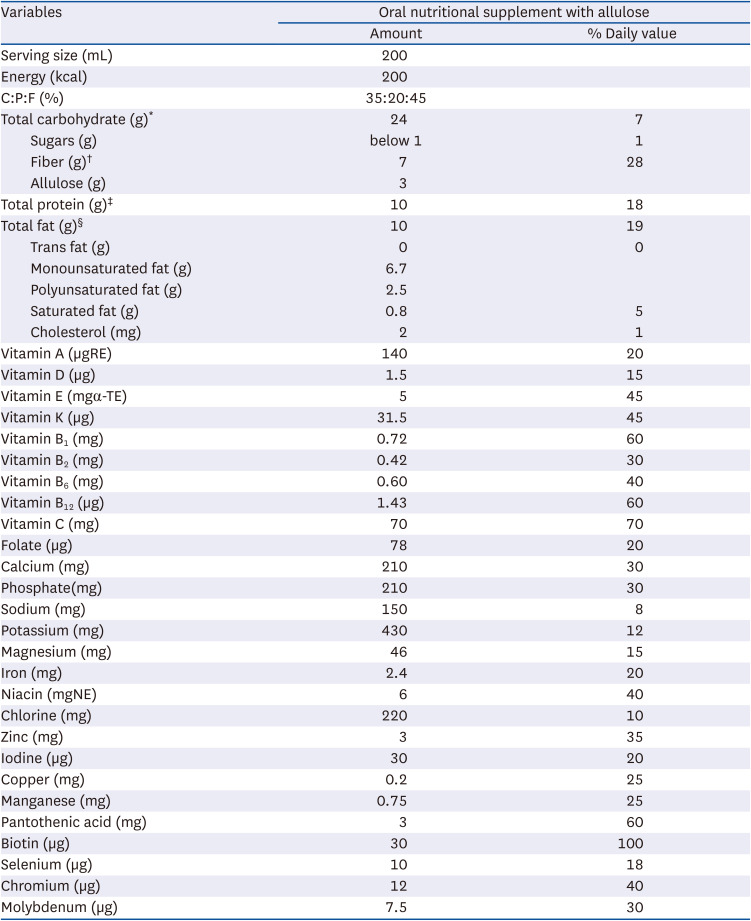
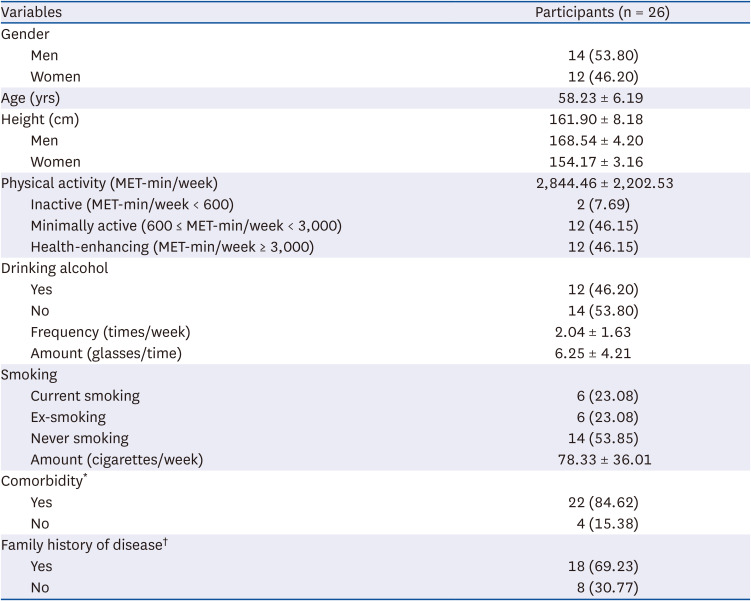
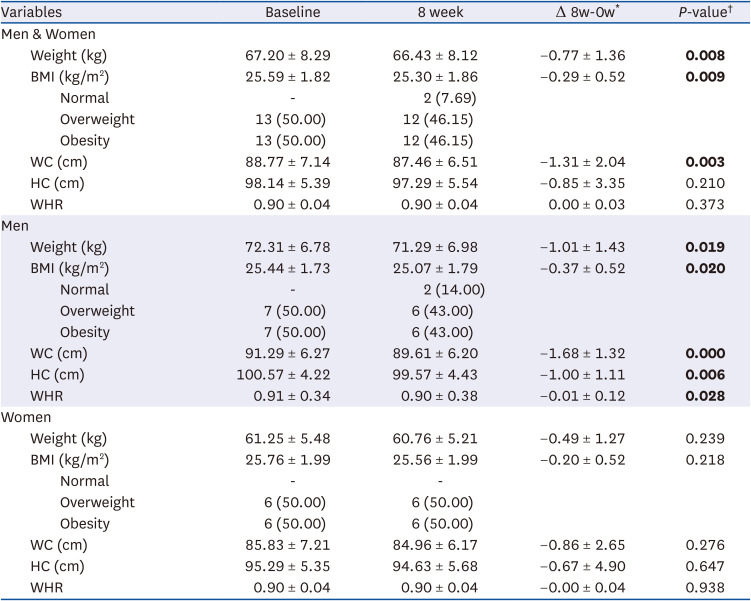
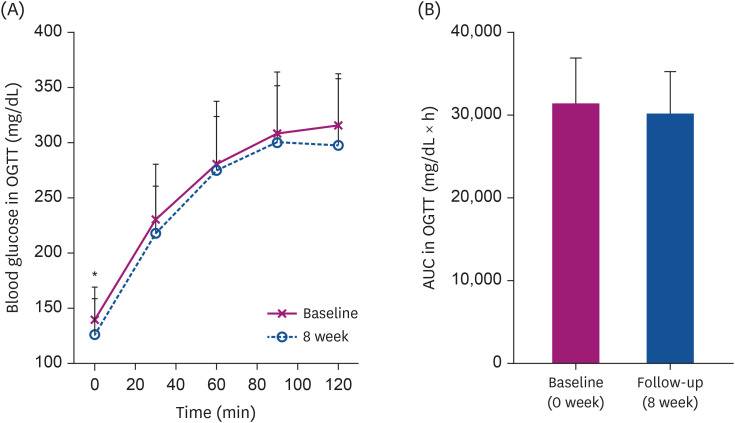
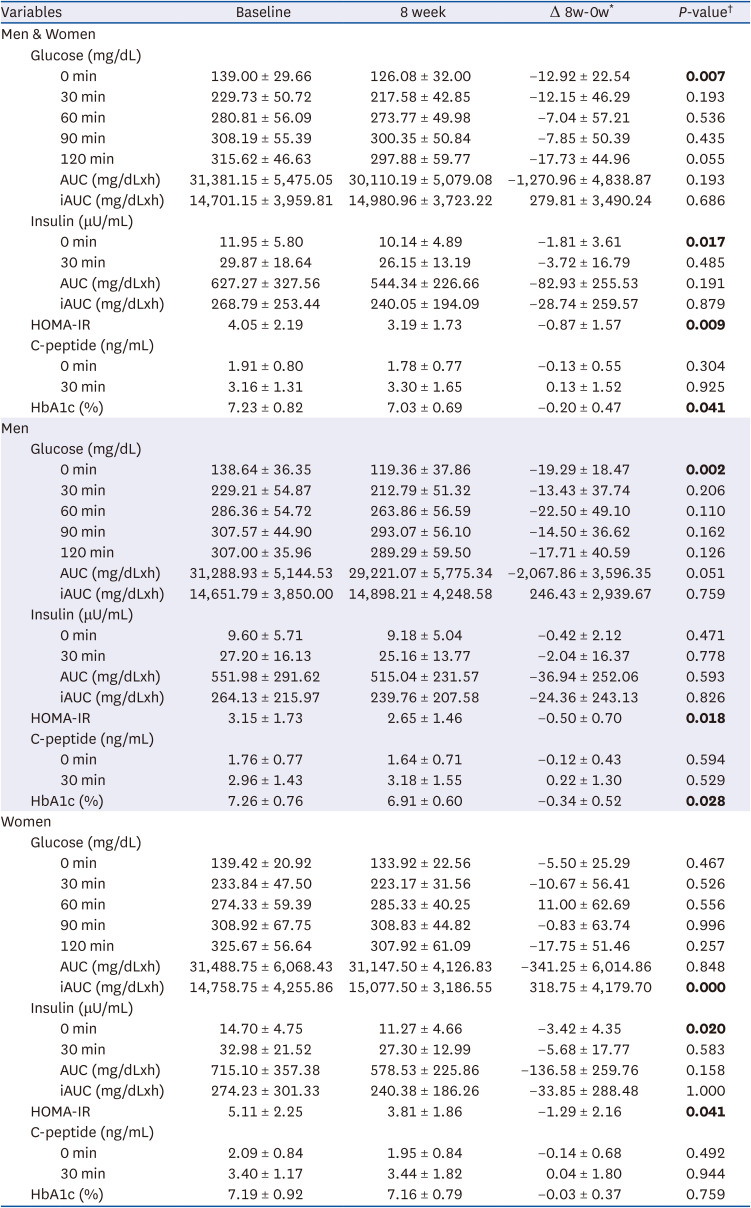
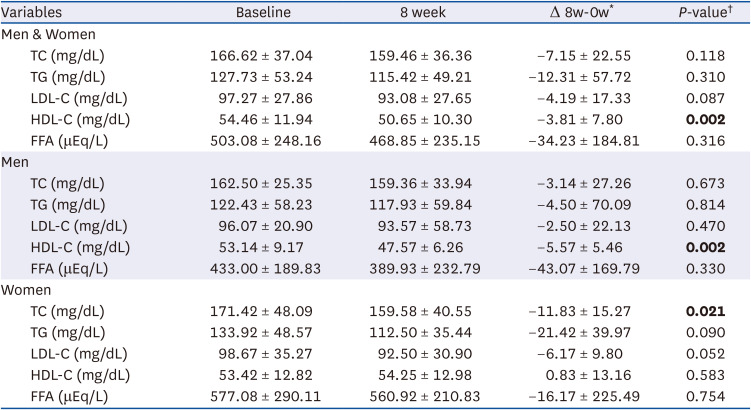
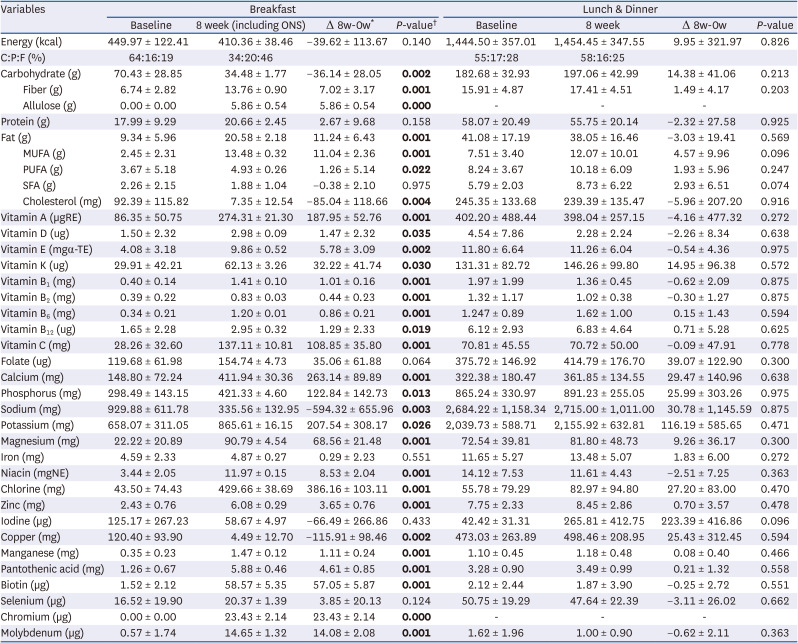
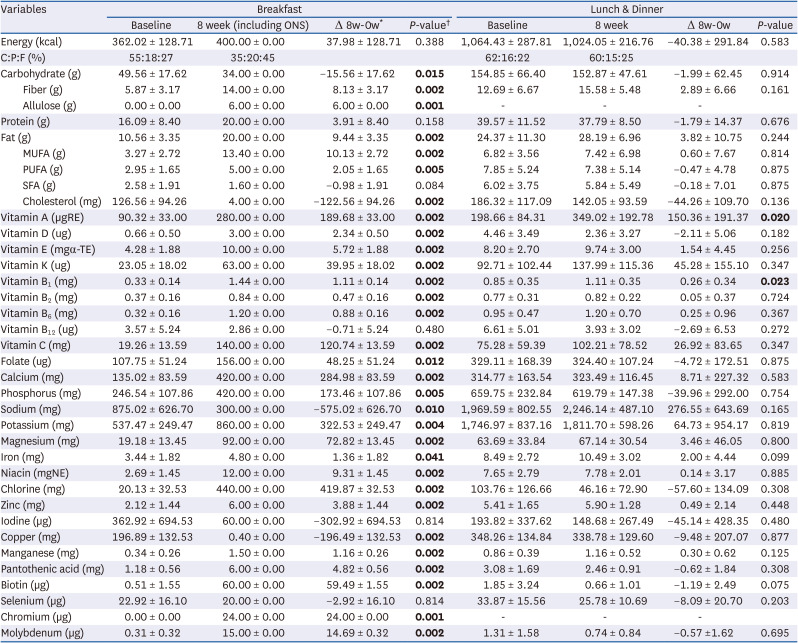




 PDF
PDF Citation
Citation Print
Print



 XML Download
XML Download